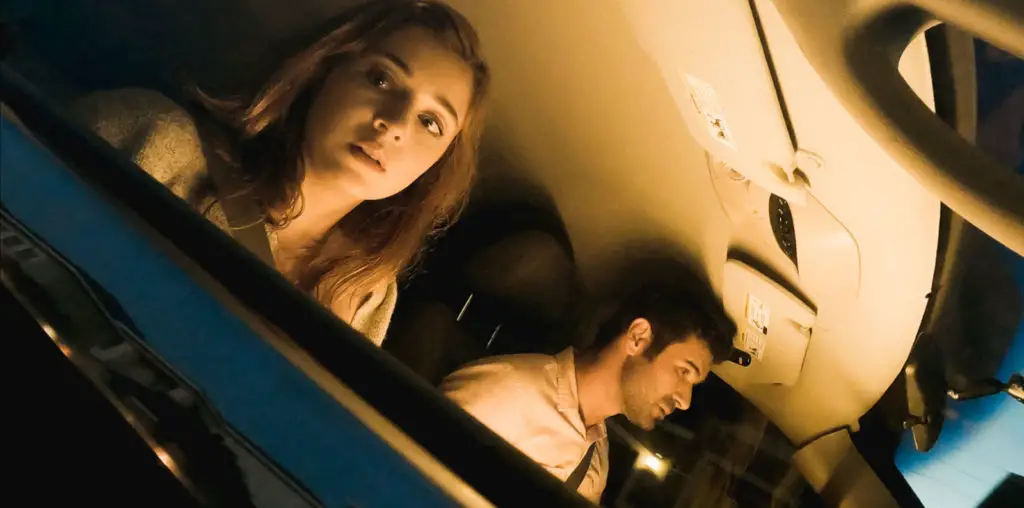
Loosely based on true events in recent years, “Razor Eaters” is a stunning and brilliant achievement in filmmaking. Not only is it the best independent film I have ever seen, in this reviewer’s opinion, but it rivals mainstream Hollywood films in action, direction, and acting. The near-flawless script is full of twists and turns, while the characters are well developed and complicated. On top of these achievements, “Razor Eaters” is disturbing and controversial.
An Australian film that seems to rival its Aussie predecessors (Romper Stomper and Chopper) in terms of infamy (it was actually denounced by the Melbourne police department as “unethical” and “extremely violent”), “Razor Eaters” is aggressively violent and in-your-face, and boasts a cast that is likely to go on to bigger and better things based on their talent and the success of this film.
The story centers on the exploits of five young men and the acts of violence they commit against those they feel have wronged society. Both a desire for revenge and for fame prompts them to videotape all of their escapades, ultimately leading them to their eventual showdown with the police. Depicted are violent murders and tortures, aggressive physical brutality, explosions, fire, and blood.
Though the gore is stirring, this is not merely an action film. The real stars are the characters who are haunted by troubled pasts and their dissatisfaction with the present state of affairs in Australia. Zach (Richard Cawthorne) is the group’s leader, trusted implicitly by his gang; he leads them on the frenzy of destruction. Richard Cawthorne’s performance is mesmerizing, to say the least, and his charisma allows him to carry the role without ever losing touch with his character. Teague Rook plays Orville, the brilliant, if somewhat morbid, amateur pyrotechnician who provides the explosions necessary for inspiring fear in the citizens of Melbourne. His shyness hides a twisted secret that no one else guesses. Campbell Usher is the tormented Anthony, who idolizes Zach like an older brother, and gets unwillingly caught up in all of the violence. Usher plays Anthony subtly and beautifully, often conveying emotions with little or no dialogue.
Shannon Young fittingly plays Rob, the one who films all of their exploits. Both being the director, and playing the actor who is filming the violence for later viewing, seems like a challenge, especially in terms of getting the proper footage while staying in character. Shannon Young has no problems with this complex task, and the footage is always fantastic. Fletcher Humphrys, an Australian “soapy” actor, plays Roger, the loose cannon. Roger’s violent actions, maniacal laughter, and unpredictability make him easily the most enjoyable character in the film. Paul Moder rounds out the cast as Detective Danny Berdan, the cop who finds himself mesmerized by the tapes of the violent slayings. He even ends up being filmed by the Razor Eaters during one of their exploits.
Unable to distance himself from his investigation, Detective Berdan becomes a part of it. Seeking to put an end to their bloody rampage, he goes on one himself. The climax of the film is unnerving, as the police and the terrorists seem to be exactly the same in their motivation; to rid the world of those who have wronged it.
Shannon Young has created a movie of extraordinary vision and hostility. By exploring each individual character’s motivation instead of attempting to categorize the “good” guys and the “bad” guys, he crafts a distressing picture of the state of society in present Australia. By tackling the touchy subject of domestic terrorism, in light of recent attacks at the Twin Towers and throughout the past few years, Shannon Young has proven himself a daring and gutsy filmmaker. Blurring the lines between right and wrong forces the viewer to questions what they would have done in a similar situation. The ending will leave the viewer disturbed, but impressed at the skill involved to pull off this project.
Reminiscent of violent films like Reservoir Dogs, Fight Club, and “The Usual Suspects”, Razor Eaters can rival any of them for a position as a provocative, ground-breaking tale.
By following in the footsteps of independent films like The Blair Witch Project, “Razor Eaters” blends film and video seamlessly. Edited with fluidity, the film does not seem amateur or low budget because of the use of handheld video camera footage comprising most of the important and controversial scenes. Young never skimped on special effects. Real explosions, real car accidents, and real guns add professionalism and a realism that is rarely seen in independent films. No computer graphics are used at all. Blood is kept to a tasteful minimum. Authentic-looking wounds are validated by the incredible acting and superior script to create a realness that most filmmakers try to accomplish with gory effects.
Harsh and brutal, but thought provoking and, (dare I say?) mind-blowing, “Razor Eaters” is immeasurably above any other independent films that have come out in the past few years. It is not overly optimistic to say that this indie flick will gain the recognition it deserves as a great film throughout the course of its exposure in the United States and in the rest of the world, to end up next to “Mad Max” as a heavy Aussie influence on modern American cinema.
